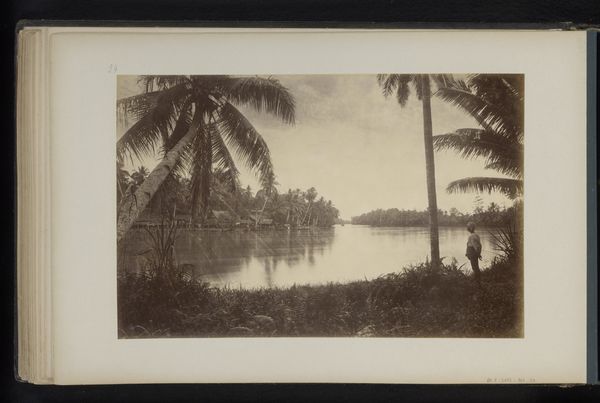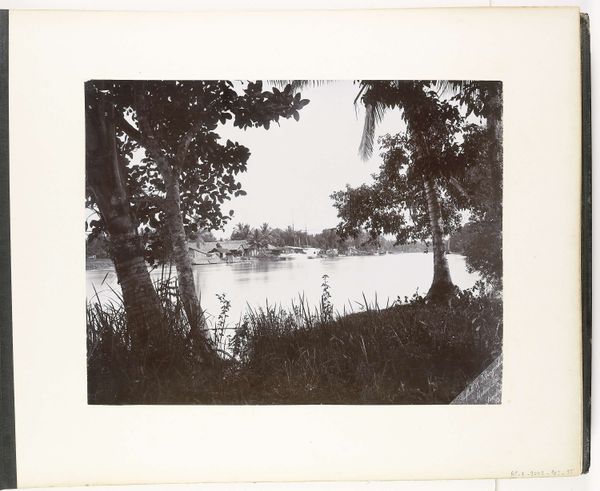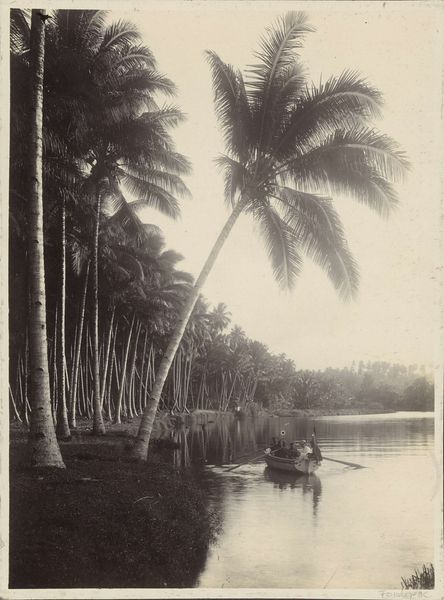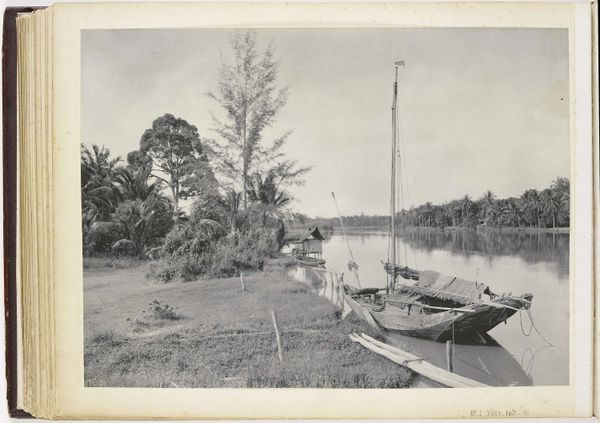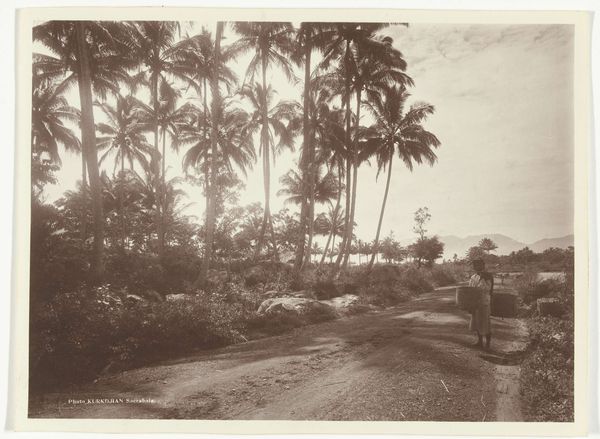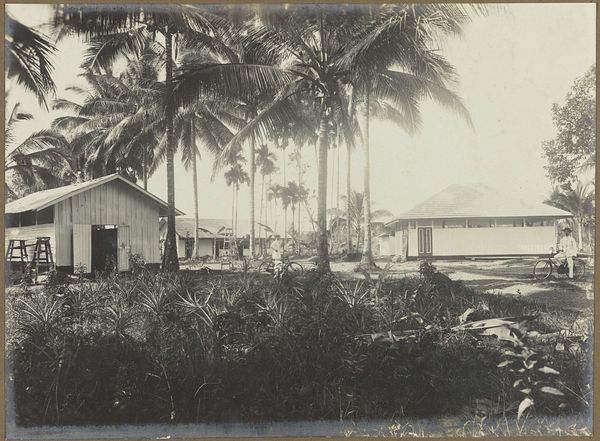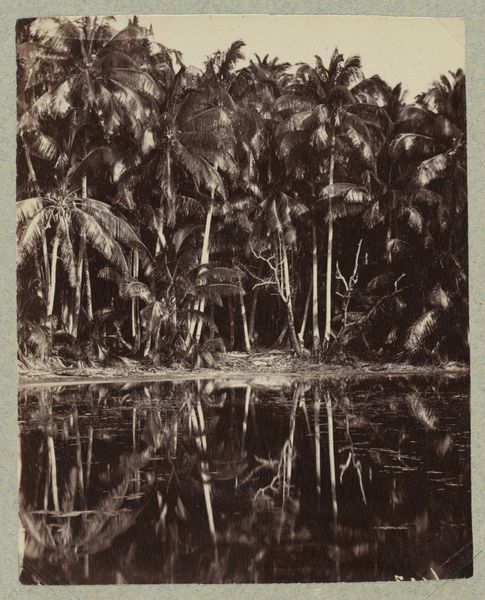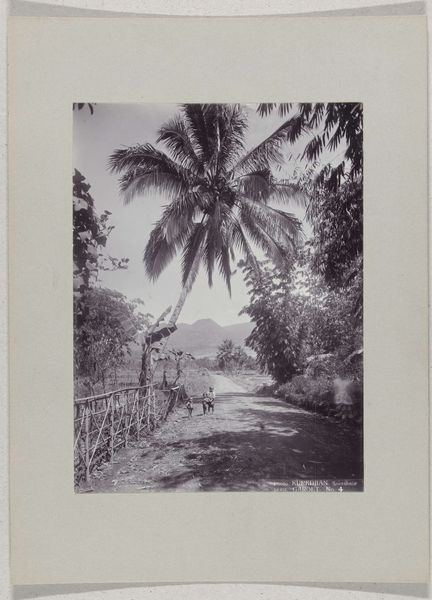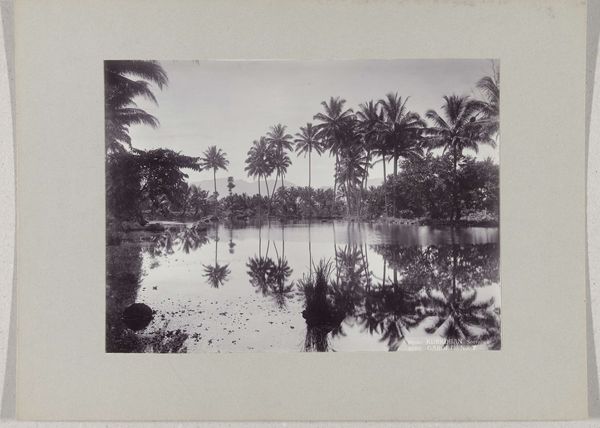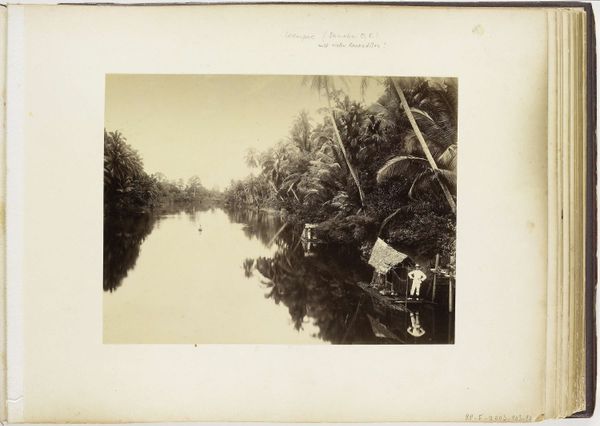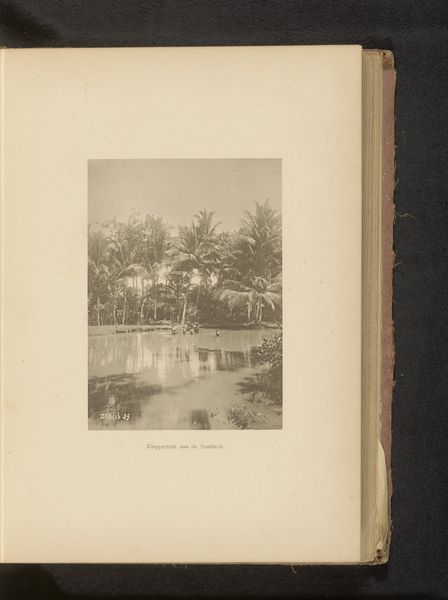
Paleis van de Sultan van Langkat (links) en rivieroever met vaartuigen op Sumatra (rechts) before 1898
0:00
0:00
print, photography
# print
#
landscape
#
indigenism
#
photography
#
orientalism
Dimensions: height 215 mm, width 133 mm, height 215 mm, width 140 mm
Copyright: Rijks Museum: Open Domain
Editor: So, here we have a photographic print from before 1898 by Carl J. Kleingrothe, titled "Palace of the Sultan of Langkat (left) and riverbank with vessels in Sumatra (right)." It feels… very staged, almost like a colonial postcard. What strikes you most about it? Curator: Well, immediately, it raises questions about representation and power. These kinds of images were often used to depict colonized lands in a certain way, weren't they? To create a narrative for Western audiences. What do you notice about the composition, particularly regarding the positioning of the Sultan’s Palace versus the river activities? Editor: I see the Palace is presented as quite distant, almost obscured by the foliage. Whereas, the river scene feels more intimate, showing the people and their boats. Is it suggesting something about the accessibility – or inaccessibility – of power? Curator: Precisely. It's about the power dynamics at play. The Sultan’s presence is minimized, made exotic. And then the focus shifts to the everyday lives of the local people, potentially framing them as needing guidance or “civilizing.” How does the concept of "orientalism" come into play when viewing such landscapes? Editor: Right! Orientalism! It's the Western gaze romanticizing and othering the East. Perhaps creating a sense of exotic allure, while simultaneously reinforcing a sense of Western superiority. It is definitely happening here! I initially saw a beautiful, calming river, but that seems secondary now. Curator: Exactly! What have we learned here? Editor: That a seemingly innocent landscape photograph can reveal layers of colonial power dynamics when you consider the context in which it was created and disseminated! Curator: Indeed! And the crucial role institutions played in shaping these narratives!
Comments
No comments
Be the first to comment and join the conversation on the ultimate creative platform.
